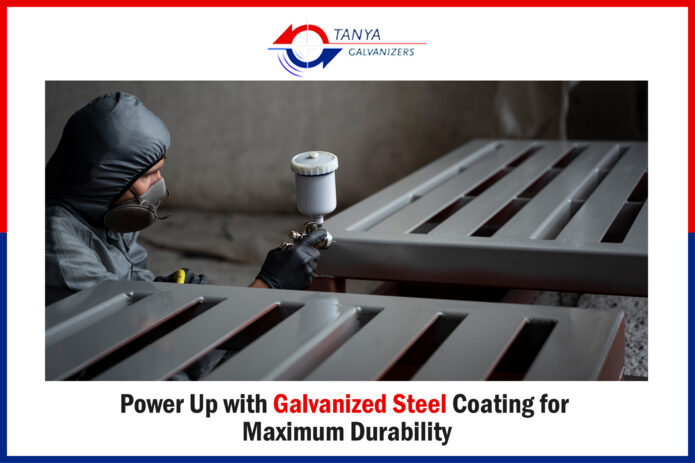The process of galvanization, crucial for achieving a strong and durable steel coating, involves immersing steel in hot molten zinc. This process, which results in a long-term durable galvanized steel coating, is characterized by a series of alloy treatments that create a robust metallurgical bond.
The galvanization process is complete when iron and zinc react, coating the steel in a protective layer. This involves dipping the steel in molten zinc, forming a durable outer layer. The coating’s thickness depends on the steel type, its thickness, and EN ISO 1461 standards. However, three exceptions may alter this: one results in a thinner coating, while the other two increase the layer thickness, offering added protection for specific applications.
Appearance of Galvanized Coating
Let us now dig down into the details that increase the maximum durability of galvanized steel coating. Below are the points that will give you a proper understanding of the process and how the overall work promotes long-term durability.
Pre-Galvanizing Consideration
Specifiers and end users often require a controlled galvanized steel coating that facilitates their work. Pre-galvanization achieves this demand by meticulously preparing hot dip galvanized steel with a uniform, bright color and attractive appearance.This process, often automated, ensures the efficient production of high-quality galvanized steel products.
The protective quality of galvanized coating remains consistent, though color variations—from bright silver to matte gray—may occur due to natural differences in the material and galvanization process. These color changes don’t impact durability but are a result of the metallurgical reactions. The steel’s chemical composition and condition play a crucial role in achieving successful hot dip galvanizing.
Galvanized steel is a formation of zinc-iron alloy coating that demands a proper chemical composition with accuracy and precision. You can hot-dip galvanize all types of commonly used steel and iron. However, steel with specific silicon content reacts quickly between iron and zinc, so workers take proper care of it..
To get the best result, the customer must ensure proper care and safety in terms of preparing the steel components. This step ensures that the construction and design work goes properly with proper galvanized steel coating.
Thickness of Galvanized Coatings
Now comes the question of how the thickness of the galvanization is considered. Hence, here are the details. It is segregated into three parts, and here is the list.
(1) Centrifuged galvanized coating
(2) Surface roughening
(3) Galvanizing reactive steel
Final Words:
At Tanya Galvanization, we are dedicated to providing our clients with comprehensive support and high-quality galvanized steel coatings. Our years of experience and in-depth knowledge of market strategies enable us to use the latest processes to deliver the perfect work our clients expect.
